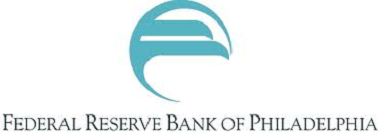The Philly Fed Business Outlook Survey declined marginally but remains solidly in expansion territory for the third month. Key elements were mixed.

This is a very noisy index which readers should be reminded is sentiment based. The Philly Fed historically is one of the more negative of all the Fed manufacturing surveys.
The market was expecting the index value of +8.0 to +22.0 (consensus 14.3) versus the actual at 15.4. Positive numbers indicate market expansion, negative numbers indicate contraction.
Manufacturing firms responding to the May Business Outlook Survey indicated that regional manufacturing activity expanded this month. The survey’s indicators for general activity, new orders, and shipments were positive for the third consecutive month, although they fell slightly from higher readings last month. Employment continued to increase for the reporting firms. The survey’s indicators of future activity improved, suggesting that firms remain optimistic about continued growth over the next six months.
Indicators Reflect Continued Growth
The diffusion index of current general activity decreased slightly from a reading of 16.6 in April to 15.4 this month. The index has remained positive for three consecutive months, following the weather-influenced negative reading in February (see Chart). The new orders and current shipments indexes also remained positive but moved lower this month, decreasing 4 points and 9 points, respectively.
Indicators suggest slightly improved labor market conditions this month. The employment index remained positive for the 11th consecutive month but increased only 1 point. The percentage of firms reporting increases in employment (19 percent) remained higher than the percentage reporting decreases (11 percent). The workweek index was also positive for the third consecutive month but edged 2 points lower.
The survey’s price diffusion indexes suggest that price increases were more widespread this month. The prices received index, reflecting firms’ own final goods prices, increased notably, from 4.3 to 17.0. This is the highest reading since May 2011. Although the percent of firms that reported receiving higher prices (18 percent) exceeded the percentage reporting lower prices (1 percent), 79 percent of the firms reported steady prices. The prices paid index was also higher, increasing 12 points to 23.0, but followed three consecutive months of decline in the index.

